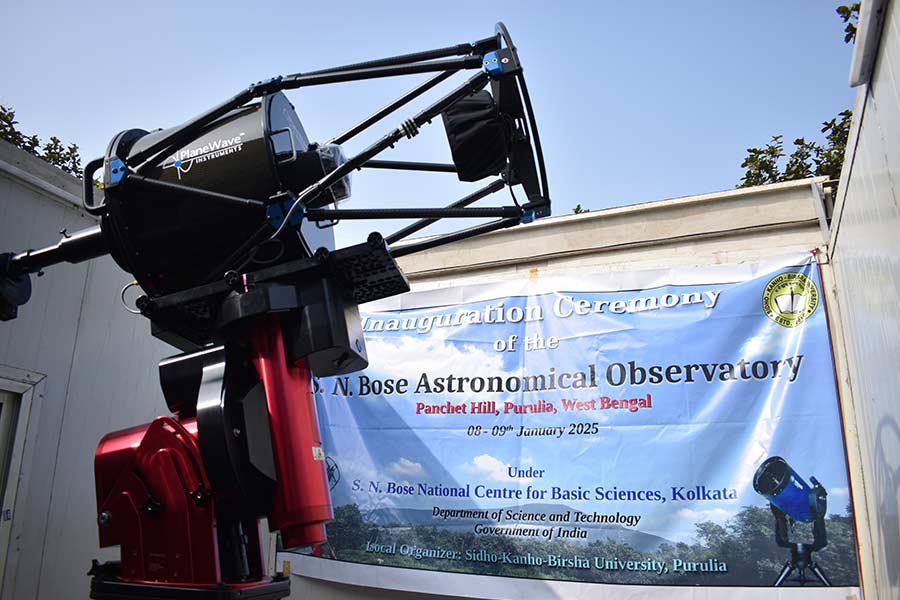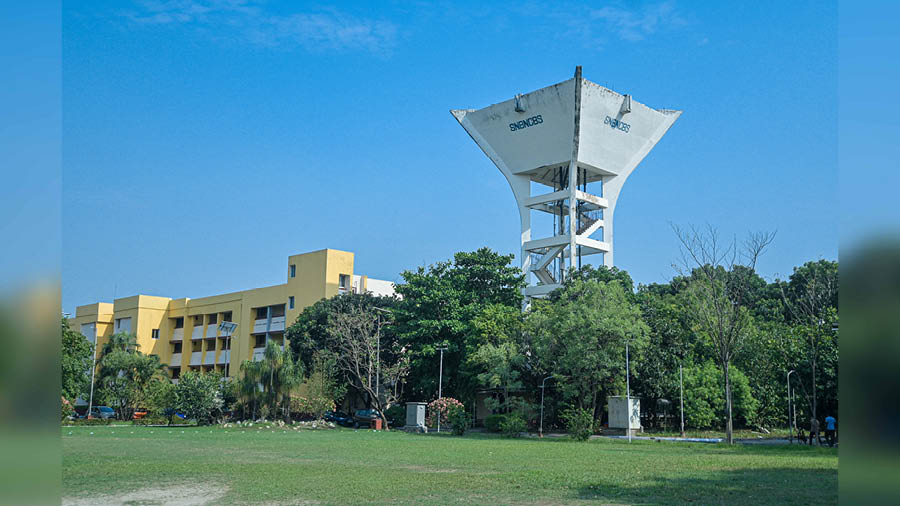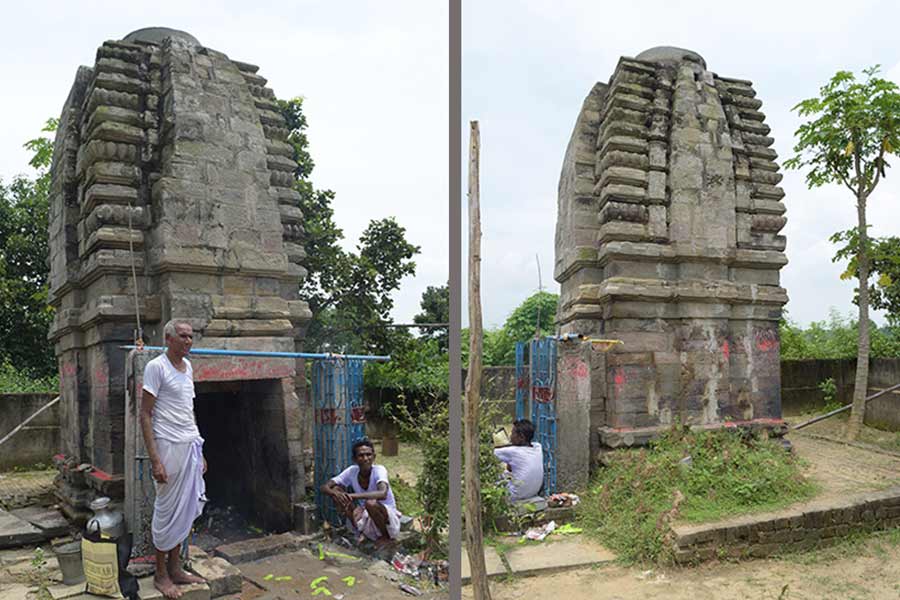The inauguration of the Panchet Hill Observatory marked a significant milestone for astronomical research in eastern India. This observatory, perched at an elevation of 600m above ground level, in the Garpanchakot area of Purulia district, is a major one along the longitude of 86°E from the Arctic Ocean in the north to Antarctica in the south of the globe. The project, spearheaded by the SN Bose National Centre for Basic Sciences, is set to play a vital role in observational astronomy.
Ramkrishna Das of the SN Bose centre, the chief astrophysicist for the project, told My Kolkata: “As of now, there are only a few optical telescopes in India. These are located at Ladakh, Devasthal (Nainital), Mount Abu, Girawali and Kavalur. These telescopes are located in the northern, western and southern parts of India. So, there is a longitudinal gap as there is no professional observatory in the eastern part of India. Noting this, the decision of establishing the observatory was taken sometime around 2012. Currently, there are three astronomers, Soumen Mondal, Tapas Baug and myself, who are working towards the establishment of the observatory.” According to Das, the primary aims of the observatory are “facilitating scientific observations and training young students”.
The scientists for the project have extensively surveyed the hilltop since 2022 to determine optimal telescope positioning and evaluate atmospheric turbulences. From November to April, one can expect 160 clear days of observation.
Plans for astrotourism to spread interest among locals
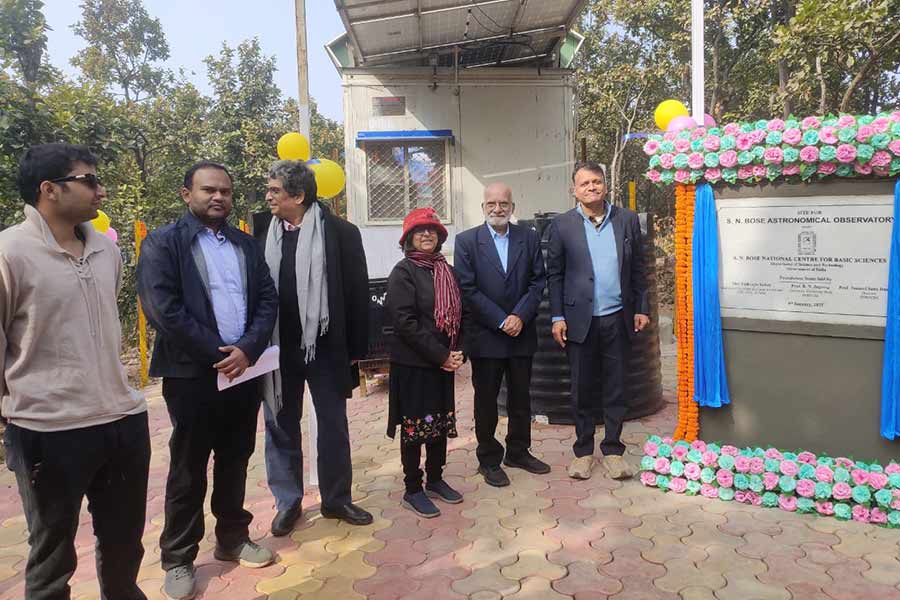
Dignitaries present at the inauguration of the observatory, including Ramkrishna Das (second from left) and Tanusri Saha-Dasgupta (fourth from left)
The inauguration on January 8, attended virtually and in person by key figures, was a proud moment for the scientific community. Tanusri Saha-Dasgupta, director of the SN Bose centre, expressed hope that the observatory would significantly contribute to astronomical research. B.N. Jagtap, chairperson of the governing body of the SN Bose centre, emphasised the importance of integrating indigenous knowledge systems with modern astronomical studies. He called for systematic documentation of local wisdom, particularly pertaining to knowledge of the night sky and weather predictions, to foster a collaborative knowledge ecosystem.
Viswajit Sahay, financial adviser of the Department of Science and Technology, Government of India, highlighted how observatories create their own ecosystem. He referenced the recent establishment of an observatory in Ladakh by the Indian Institute of Astrophysics, which has partnered with several northern universities to develop astronomy courses for local communities.
The Panchet Hill Observatory is expected to similarly drive scientific engagement in its vicinity. “The centre has planned for astrotourism to spread interest among the local people and students. As the observations require different kinds of instruments, there will be scope to develop instruments using the knowledge that locals have,” noted Das.
Fostering a richer understanding of the night sky
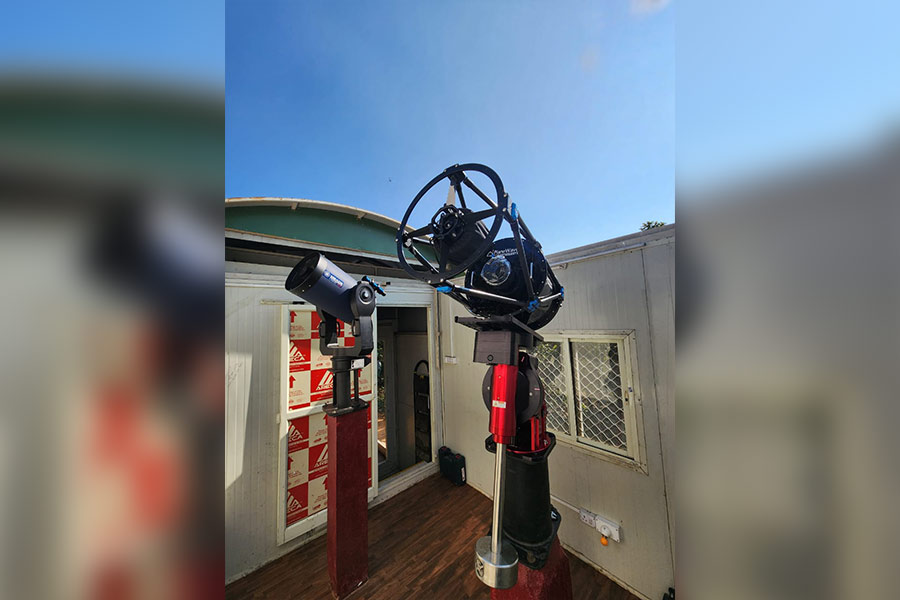
Beyond scientific research, the observatory is set to serve as a valuable educational resource
Currently, the observatory is equipped with two optical telescopes — one with a 12-inch diameter and another with a 14-inch diameter. These have already begun stellar observations, with findings aligning well with those from Mount Abu. “Panchet has been chosen as it is relatively dry (meaning less humidity), dark, has a favourable atmospheric condition with a significant number (about 150) of clear nights (photometric and spectroscopic), and there is no human population. So the place is suitable for establishing an astronomical observatory. The importance of the project will encourage people to protect the surrounding environment and keep it free from pollution”, added Das.
Beyond its role in advancing scientific research, the Panchet Hill Observatory is set to serve as a valuable educational resource. Vice-chancellor of Sidhu Kanu Birsa (SKB) University, Pabitra Kumar Chakrabarty, emphasised the importance of student-centric projects and expressed his commitment to ensuring that students gain maximum benefits from the observatory. A certificate course in Observational Astronomy, offered jointly by the SN Bose centre and SKB University, has already been introduced. Local school children will be invited for interactive sessions, nurturing a scientific temperament and making astronomy accessible to a broader audience.
Vivek Pankaj, the SDO of Raghunathpur, has taken a keen interest in the observatory. Having personally visited the site multiple times, he has been particularly impressed by the clarity of observations achieved — 1.4 arc seconds of vision. His enthusiasm is shared by many in the local administration, who see the observatory as a beacon of scientific progress in Purulia, a district traditionally considered underdeveloped.
Local communities, particularly tribal groups, have long relied on celestial patterns for timekeeping, navigation and weather prediction. The observatory provides an opportunity to formally document and combine this indigenous knowledge with contemporary scientific methods, fostering a richer understanding of the night sky.
While the Panchet Hill Observatory is already functional, continued financial support is crucial for its expansion. A major future upgrade is in the pipeline: the installation of a 1.5-metre telescope. “The centre has submitted a funding proposal to the Department of Science and Technology for establishment of the main observatory which will hold this telescope,” said Das. This enhancement is expected to significantly expand the observatory’s research capabilities.
The observatory holds significance beyond India’s borders
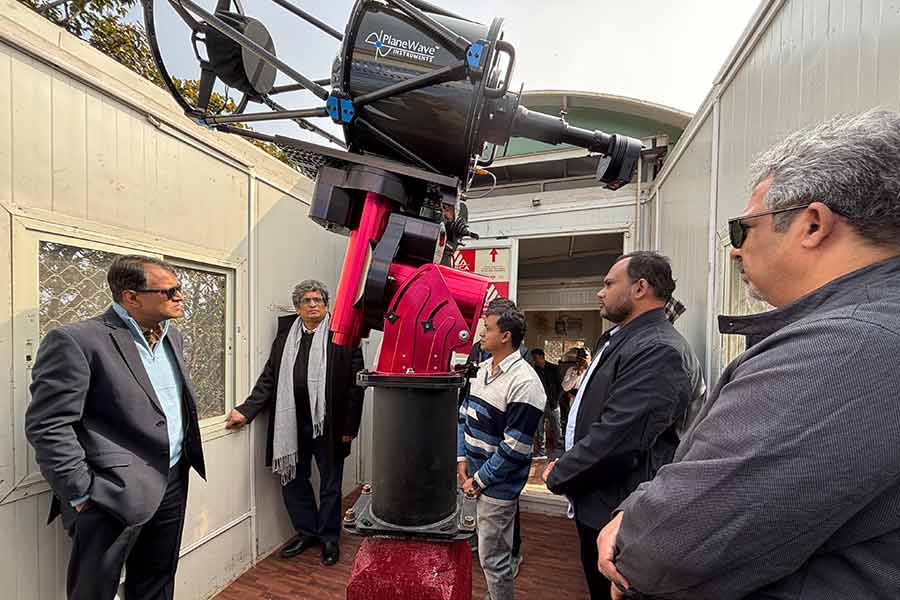
The observatory’s geographical positioning is crucial for studying transient stellar phenomena
Daily atmospheric and weather condition measurements are being carried out under the supervision of a research scholar from SKB University, which has signed an MoU with the SN Bose centre for the joint operation of the observatory. Securing public or private funding for such projects remains a challenge, but the observatory’s potential scientific and educational contributions make it a worthwhile investment.
The Panchet Hill Observatory holds significance beyond India’s borders. Its geographical positioning along the 86°E longitude is crucial for studying transient stellar phenomena, filling a gap in global observation networks. During a site visit, astrophysicist Somak Raychaudhury had underscored the observatory’s strategic importance in contributing to international astronomical research.
Notably, the observatory’s inauguration coincided with two significant dates in the history of science: the birth anniversary of Stephen Hawking and the death anniversary of Galileo Galilei. This alignment serves as a symbolic reminder of the observatory’s potential to further humanity’s understanding of the cosmos.
